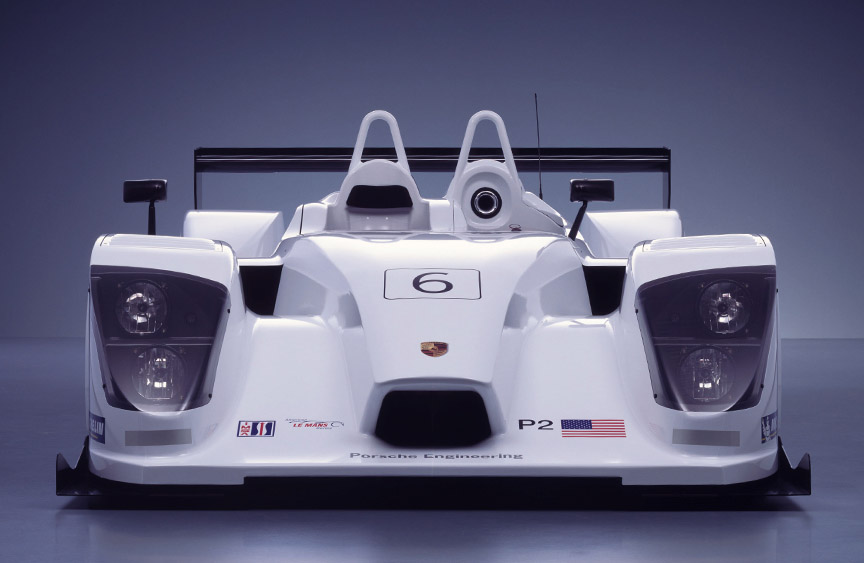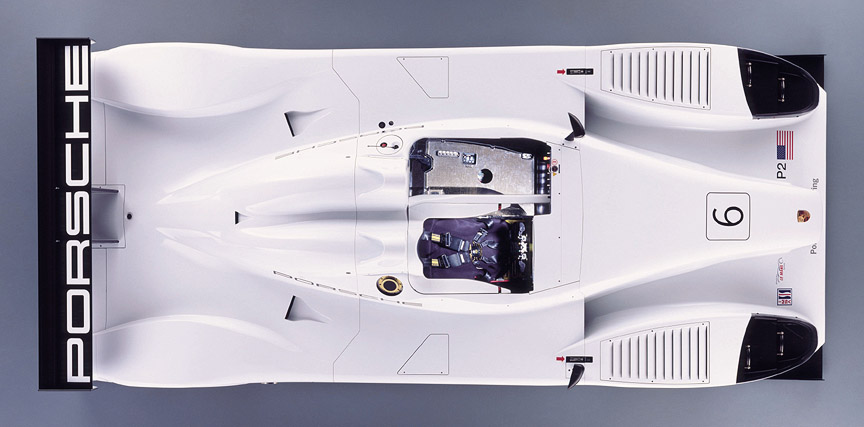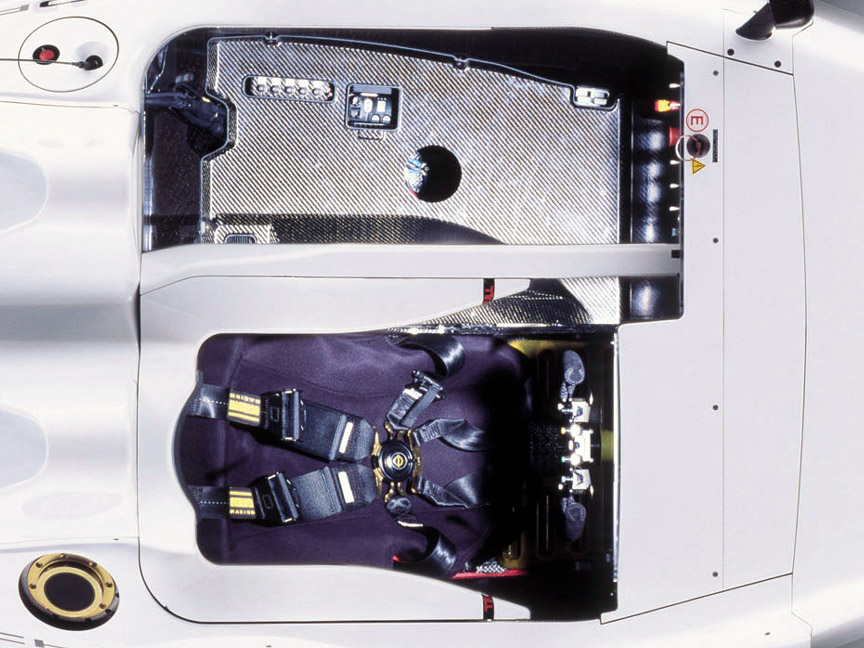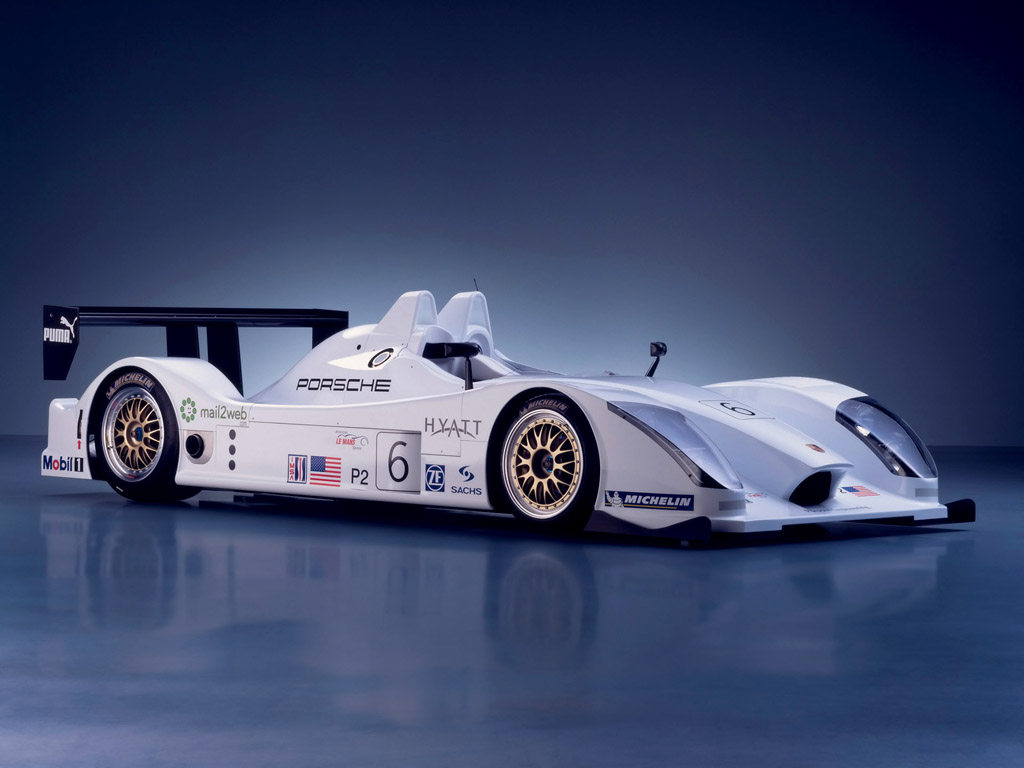Porsche RS Spyder (9R6) (2005 – 2006)
Premiere: 2005 October 16 at Laguna Seca, California / Engine: 3.4V8, normally aspirated / Gearbox: 6-speed sequential with paddle-shift
Porsche created the first prototype racecar it has designed and constructed since the 1998 24 Hours of Le Mans winning Porsche 911 GT1 as a commission. The Porsche RS Spyder was commissioned by Porsche Cars North America, Inc. (PCNA) and Porsche Motorsport North America (PMNA) for racing customers who compete in the LMP2 (Le Mans Prototype 2) class of the American Le Mans Series (ALMS).
It featured a completely new Porsche engine, transmission, and chassis, all incorporating the latest in Porsche automotive technology and created to conform to new 2006 rules and regulations of international sanctioning body Automobil Club de l’Ouest (ACO).
The heart of the new Porsche LMP2 is its newly-designed 3.4-liter, 90-degree, V8 engine. Limited to 480 horsepower at 10,100 rpm by ACO air restrictor regulations, the power plant is lightweight with a very low center of gravity. It features four valves per cylinder, a dry sump lubrication system, and an air intake manifold with single cylinder throttle valves. The engine is mated to a Porsche-engineered sequential six-speed constant mesh transmission. A structural part of the car, the gearbox is operated by a paddle shift system on the steering wheel and incorporates a triple-disc carbon fiber racing clutch.
The Story
The Porsche RS Spyder, internally called 9R6, exists only thanks to a customer order made in 2004 by Penske Motorsports, a subsidiary of Penske Racing.
This Le Mans prototype was not built for the factory racing team which was killed off in the end of the nineties by CEO Wendelin Wiedeking after the company founder Ferry Porsche had passed away. Wiedeking terminated the Porsche 9R3 LMP1 racing car project in 1999, even though the engineers had already fully built the full carbon-fibre racing car with the new 5.5V10 Porsche engine. Wiedeking made the decisions based on financial reasons and ignored the factors of passion and motorsport that had made Porsche what it was. On the other hand, the 9R6 was an LMP2 class car, so not a top class racer. In prototype racing Porsche would not be interested in anything less than the top LMP1 class.
The 9R6 was built according to the Le Mans Prototype class 2 (LM P2) regulations and to be raced at the American Le Mans Series (ALMS) in USA and Canada. The ALMS was created in the spirit of the Le Mans endurance races, hence the name of the series.
In June 2005, the first 9R6 was completed and testing started.
The 9R6 was a full carbon-fibre construction. The completely new 3.4V8 normally aspirated engine had a power output of 351 kW (478 DIN hp, 470 SAE hp) and 272 lb-ft/370 Nm of torque. The power was governed with air restrictors complying to regulations. The 6-speed sequential transmission was operated from the steering wheel. The clutch was a triple-disc carbon fibre unit. The brake discs were carbon ceramic, measuring 380 mm at the front and 355 mm at the rear. The minimum weight set by the rules was 750 kg (1653 lb).
In July 2005, the car got its name: RS Spyder.
The RS Spyder was created for the 2006 ALMS season, but in order to kick off right from the start of the season with some experience under the belt, it was planned to race the car already in the end of 2005. The “Petit Le Mans” race in Atlanta on October 1, 2005, didn’t work out for the RS Spyder team, so the Laguna Seca 4h race on October 16 was the last chance for testing in racing conditions. There was no real competition in the LMP2 class and as the new Porsche ran without problems, the class victory was taken. The Penske RS Spyder was piloted by Porsche factory drivers Sascha Maassen and Lucas Luhr who were the test drivers during the development process of the 9R6. In overall classification the result was 5th following four LMP1 class cars (Zytek, Audi, Lola, Audi).
It was agreed that Penske will run two RS Spyders in the 2006 ALMS season and that in the future Porsche is allowed to sell the cars also to other teams. While chassis LMP2001 was a factory test car, LMP2002 and LMP2003 were sold to Penske.
The Penske cars didn’t finish the first two races of 2006. Points were still collected when the covered distance was at least 70% of the winner’s distance. After the bad start to the season, at the third race, the American Le Mans Series Mid-Ohio race, Penske took the 1-2 overall victory in front of Audi LMP1. Timo Bernhard and Romain Dumas piloted the winning RS Spyder #7 (LMP2 003) and Sascha Maassen and Lucas Luhr the second place RS Spyder #6 (LMP2 002).
In the 2006 ALMS LMP2 there were only two teams which ran the whole season. Penske came out on top of Intersport which ran Lolas with 2-litre AER turbo engines. In LMP2 driver’s standings Sascha Maassen and Lucas Luhr collected the biggest number of points. For the next season, a new version of the RS Spyder was created.


























